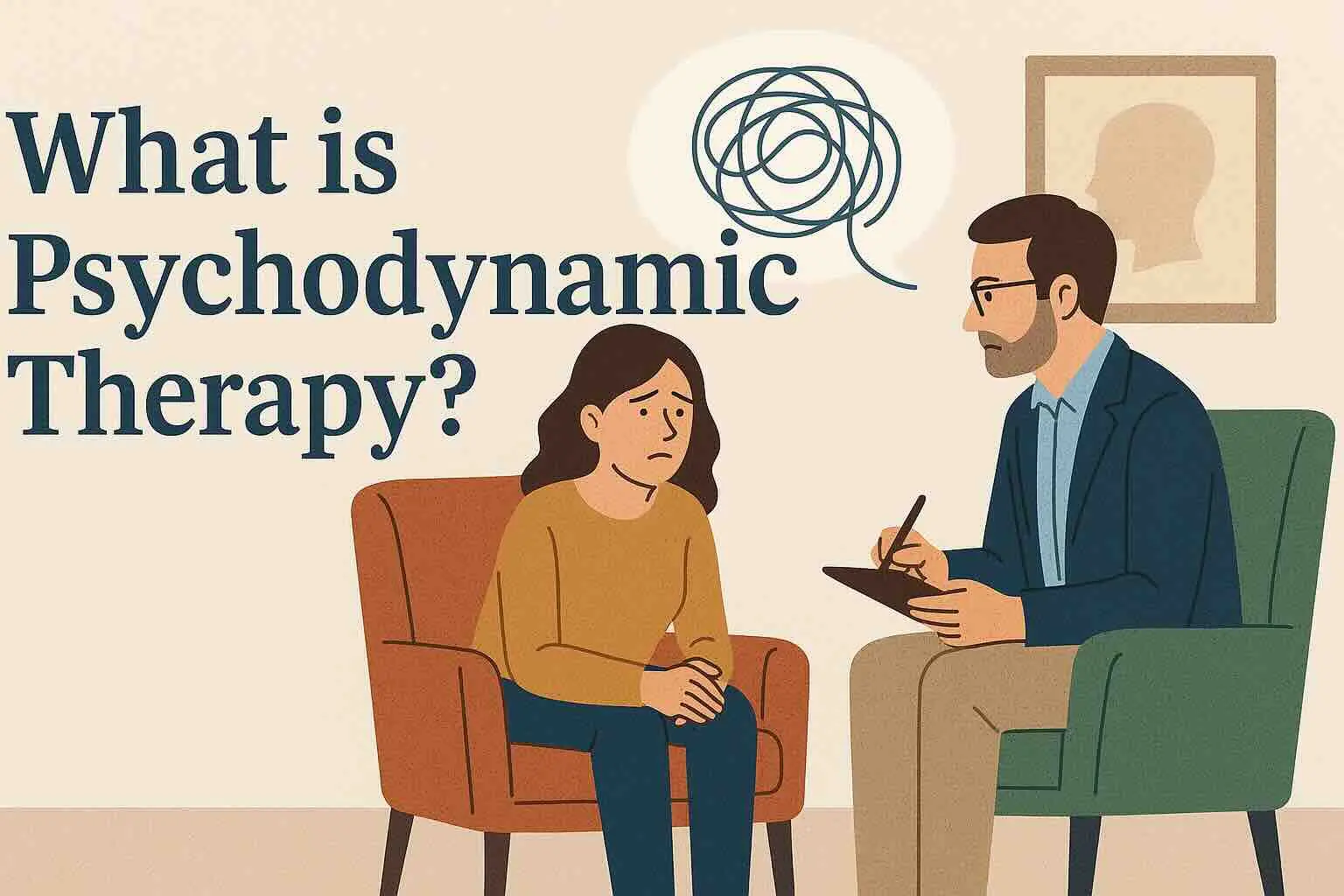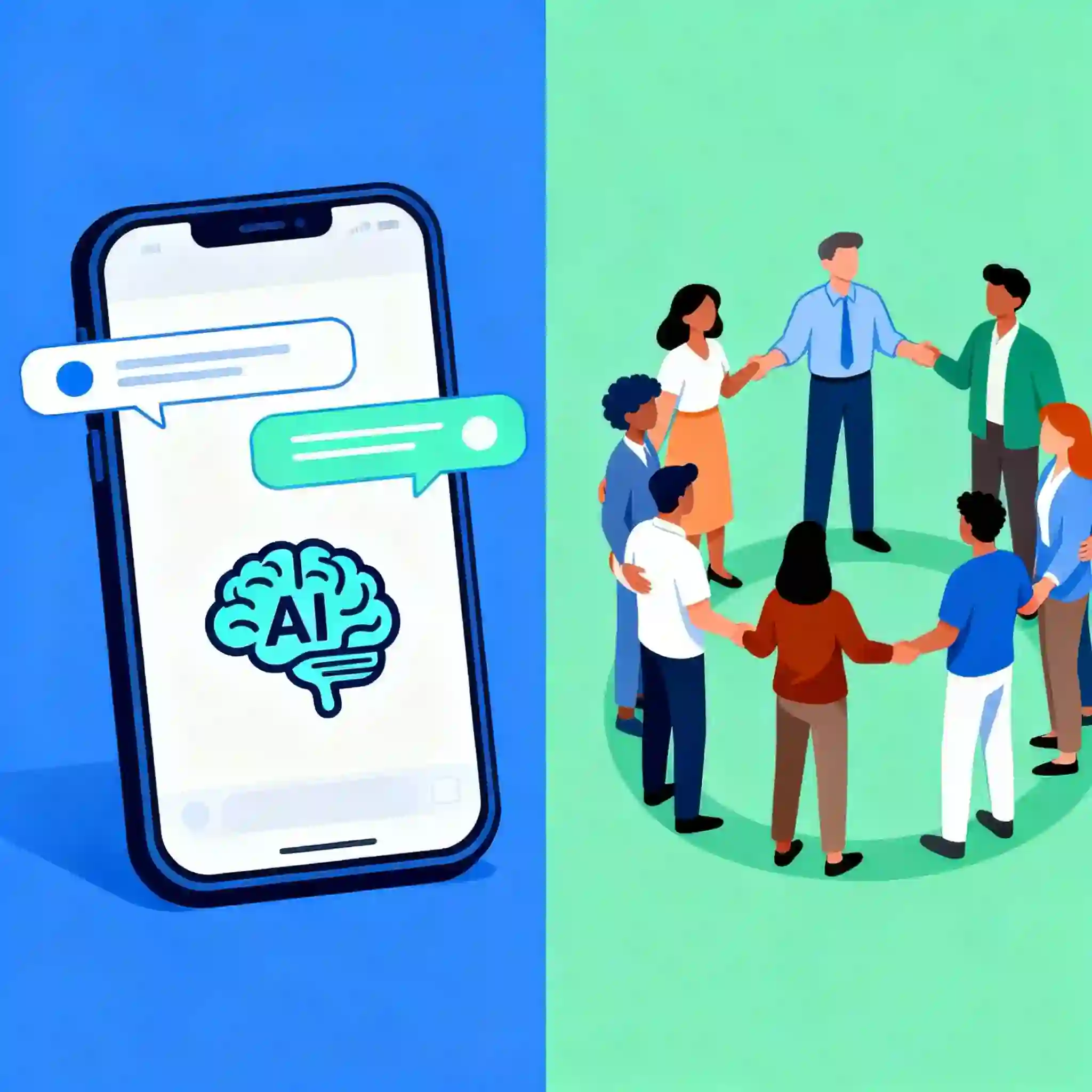TL;DR
Psychodynamic Therapy is an insight-oriented approach that explores how unconscious processes, early relationships, and internal conflicts shape current behaviors and emotions. Originating with Freud and evolving through object relations and attachment theories, it uses techniques like free association, transference analysis, and dream interpretation. Research shows moderate effect sizes (d = 0.69) and sustained benefits up to two years post-treatment. Modern integrations include brief psychodynamic therapy (BPT) and digital support via Noah AI for journaling and self-reflection prompts.
Psychodynamic Therapy delves into the unconscious mind to uncover the hidden roots of emotional distress. Unlike symptom-focused therapies, it emphasizes long-standing patterns, internal conflicts, and early life experiences—providing deep, transformative insight rather than quick fixes.
Historical Foundations
- Sigmund Freud (1890s): Developed psychoanalysis, introducing the unconscious, defense mechanisms, and the significance of childhood experiences.
- Anna Freud & Ego Psychology: Expanded focus on defense processes and adaptive functioning.
- Object Relations & Attachment Theorists (1950s–1980s): Melanie Klein, Donald Winnicott, and John Bowlby emphasized internalized relationships and early attachment’s impact on adult emotional life.
- Brief Psychodynamic Therapy (BPT): 1990s onward emphasized time-limited, targeted insight interventions.
Core Principles
- Unconscious Processes: Much of our mental life occurs below awareness, driving thoughts and behaviors.
- Early Relationships: Childhood dynamics with primary caregivers form internal object relations that influence adult attachments.
- Transference & Countertransference: Feelings toward past figures are projected onto the therapist (transference) and therapist’s reactions (countertransference) become diagnostic tools.
- Defense Mechanisms: Unconscious strategies (e.g., repression, projection) protect against anxiety but can create maladaptive patterns.
- Insight & Working Through: Awareness of unconscious material fosters emotional resolution and lasting change.
Therapeutic Techniques
- Free Association: Clients verbalize thoughts without censorship, revealing unconscious material.
- Dream Analysis: Dreams are examined for symbolic representations of internal conflicts.
- Transference Interpretation: Therapist-client relationship mirrors past relationships, offering real-time insights.
- Exploration of Defenses: Identifying and interpreting defense mechanisms to reduce their maladaptive impact.
- Clarification & Confrontation: Therapist helps clarify themes in client's narrative and gently challenge inconsistencies.
How Psychodynamic Therapy Works
- Assessment & Alliance (Sessions 1–3): Establish safe therapeutic relationship, identify repeating interpersonal themes.
- Middle Phase (Sessions 4–20+): Deep exploration of unconscious conflicts, patterns of transference, and defense mechanisms.
- Termination & Integration: Consolidate insights, strengthen healthier internal representations, prepare for life beyond therapy.
Evidence of Effectiveness
- Meta-Analysis (2020): 23 RCTs found psychodynamic therapy yields moderate effect sizes (d = 0.69) for depression and anxiety, with gains maintained at 2-year follow-up.
- Comparative Trials: Demonstrate equivalent outcomes to CBT for certain conditions, with stronger effects over long-term follow-up.
- Brief Versions: BPT (12–24 sessions) shows significant symptom reduction comparable to longer treatments and high patient satisfaction.
Modern Applications and Digital Integration
- Brief Psychodynamic Therapy (BPT): Time-limited model focusing on a core problem area to improve accessibility.
- Group Psychodynamic Therapy: Utilizes group dynamics to reveal interpersonal patterns.
- Noah AI Support:
- Guided Journaling Prompts: Facilitates free association and self-reflection exercises.
- Transference Tracking: Encourages users to note emotional reactions to app prompts, mirroring real-time transference.
- Defense Mechanism Alerts: AI-driven insights when users consistently avoid certain topics.
- Dream Interpretation Chatbot: Interactive dream journaling and symbolic analysis.
Who Benefits from Psychodynamic Therapy?
- Chronic Depression & Anxiety: Insight into root causes fosters deeper change.
- Personality Disorders: Long-standing patterns respond to deep exploration.
- Interpersonal Difficulties: Recurring relationship conflicts linked to internal object relations.
- Trauma Survivors: Processing unconscious trauma memories with a supportive therapeutic frame.
Frequently Asked Questions
How long does psychodynamic therapy take?
Traditional models involve 50–100 sessions, but BPT can be effective in 12–24 sessions when problem-focused.
Is this therapy only about the past?
While exploring early experiences is key, emphasis is on how those patterns express in present-day relationships and behaviors.
Can these insights translate into daily change?
Yes. Working through unconscious conflicts reduces symptoms and promotes healthier coping and interpersonal functioning.
How does AI enhance psychodynamic work?
Noah AI’s journaling tools, reflective prompts, and pattern recognition extend in-session insights into daily self-exploration, reinforcing therapeutic progress.
Conclusion
Psychodynamic Therapy illuminates the unconscious forces shaping our inner lives, offering profound, enduring change through insight rather than symptom suppression. As digital platforms like Noah AI integrate these principles with AI-driven reflections, the power of psychodynamic insight becomes accessible anytime, bridging the gap between therapy sessions and enhancing emotional growth. By understanding and transforming deep-rooted patterns, individuals unlock lasting psychological freedom and interpersonal fulfillment.
Ready to explore your unconscious patterns? Discover how Noah AI’s digital psychodynamic tools can guide your journey of insight, self-understanding, and lasting emotional change.
Download the Noah AI app for iPhone and Android today.
References
- “The efficacy of psychodynamic therapy: A systematic review and meta-analysis” – Journal of the American Medical Association Psychiatry
https://jamanetwork.com/journals/jamapsychiatry/fullarticle/2685324 - “Psychodynamic Therapy: A Review of Evidence” – PubMed Central
https://www.ncbi.nlm.nih.gov/pmc/articles/PMC7001362/ - “Mechanisms of Change in Interpersonal Therapy (IPT)” – PubMed Central
https://www.ncbi.nlm.nih.gov/pmc/articles/PMC4109031/ - “Brief Psychodynamic Therapy: Clinical Outcomes and Patient Satisfaction” – Frontiers in Psychology
https://www.frontiersin.org/articles/10.3389/fpsyt.2023.1160081/full - “Psychodynamic Therapy for Adolescents at High Risk” – JAMA Psychiatry
https://jamanetwork.com/journals/jamapsychiatry/fullarticle/2685324 - “Brief Psychodynamic Therapy (BPT) for Depression” – National Institute for Health Research
https://openresearch.nihr.ac.uk/articles/5-17/v1 - Cleveland Clinic – “Interpersonal Psychotherapy (IPT) – Cleveland Clinic”
https://my.clevelandclinic.org/health/treatments/interpersonal-psychotherapy-ipt - Mind UK – “What is psychodynamic therapy (PDT)?”
https://www.mind.org.uk/information-support/drugs-and-treatments/talking-therapy-and-counselling/psychodynamic-therapy-pdt/







